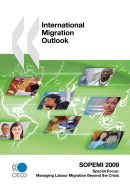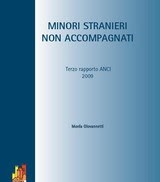
-
Download the Report
(EN | FR | ES) -
Overview
(EN | FR | ES) -
Key Facts and Figures
(EN | FR | ES) -
Presentation
(EN | FR | ES) -
Migrant Voices
(EN | FR | ES) -
FAQ
(EN | FR | ES) -
Flyer
(EN | FR | ES) -
Press Release
(EN | FR | ES
The World Migration Report 2013 is published amidst a growing debate on how the benefits of migration can best be harnessed for development. Despite progress following the first UN General Assembly High Level Dialogue on International Migration and Development (HLD) in 2006, migration remains inadequately integrated into development frameworks at national and local levels, and public perceptions of migrants and migration are often very negative. The World Migration Report 2013 contributes to the global debate on migration and development in three ways:
- By examining the impact of migration on individual well-being, the report goes beyond traditional analyses focusing on economic development and, in particular, on the impact of remittances (money that migrants send home). In contrast, by exploring how migration affects human development, the report presents a more holistic picture of development.
- The report draws upon the findings of a unique source of data – the Gallup World Poll, conducted in more than 150 countries – allowing for an assessment of the well-being of migrants worldwide for the first time.
- The report looks at how migration outcomes differ depending on the origin and destination of migrants. Traditionally, research has focused on those migrating from lower income countries to more affluent ones; this report expands the analysis, considering movements along four migration pathways and their implications for development: i.e. migration from the South to North, between countries of the South or between countries of the North, as well as movements from the North to the South.
The first three chapters of the World Migration Report 2013 provide an introduction to the theme “Migrant Well-being and Development”, present the current global migration situation across four migration pathways (migration that is South to North; South to South; North to North; or North to South), and review existing research on the emerging field of happiness and subjective well-being.
Chapter Four presents original findings on migrant well-being from the Gallup World Poll, examining outcomes on six core dimensions of well-being – Financial, Career, Social, Community, Physical and Subjective - and how they differ across the four migration pathways.
The final chapter presents key conclusions and makes recommendations for future initiatives to monitor migrant well-being and the impact of migration on development. The chapter also makes reference to the inclusion of migration in the global post-2015 development framework.



















Nessun commento:
Posta un commento